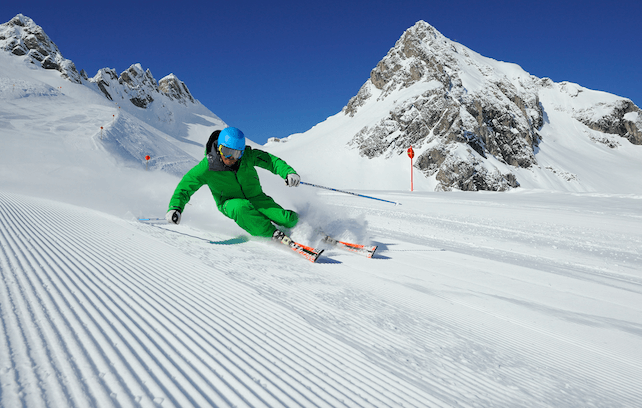
So which is best: The Alps or The Rockies? We might as well ask which of two football teams you support, because for the vast majority of skiers there’s no middle ground, they are passionate devotees of one continent or the other.
We’ve spent more than our fair share of time exploring both – having skied in BC, Colorado, Wyoming, California and Nevada, as well as extensively in Europe. We normally try not to compare them because they both offer such uniquely contrasting experiences.
But if you’ve only been to one and want to know what to expect of the other, here are the pros and cons of both:
What It Costs
Europe
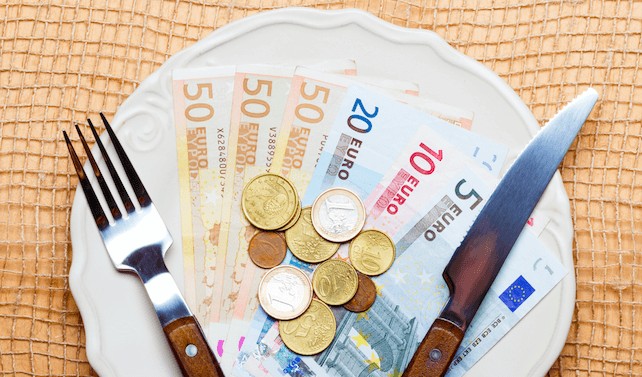
No one pretends that a skiing holiday is a cheap one, but if you shop around you can find some favourable deals, especially during low season.
Staying in a chalet – with breakfast, tea, dinner, and wine all part of the formula – is one of the most economical solutions. This applies equally whether you choose cheerful budget or five-star accommodation with gourmet cuisine and a seamless service.
While catered chalets do exist across the pond, labour laws and visa restrictions mean there’s only a handful of them.
North America
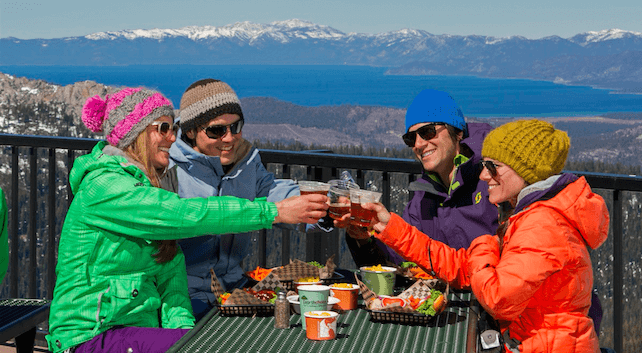
Gone are the days of cheap transatlantic charter flights and hugely favourable exchange rates. Then, you could actually make out a case for stating that a 10-day holiday in Whistler or Banff-Lake Louise was actually cheaper than its European counterpart.
Mainly expensive scheduled airfares put paid to that, but the accommodation in North America is great value for money – well, it was before the pound weakened against the dollar in the last six months! Most other aspects of the holiday, ranging from lunch on the mountain to apres-ski tend to be less expensive. The major exceptions are lift passes and ski lessons.
The Welcome You’ll Get
Europe
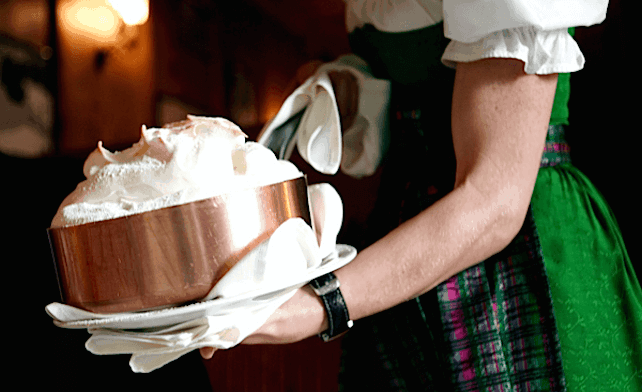
It depends, of course, on the country and the resort you choose. In general, France is less friendly than Austria. However, regardless of whether the UK remains in or out, Brits are a hugely important component of the French holiday market – in some resorts, like Val d’Isere and Meribel, English-speaking visitors actually outnumber the French. Therefore, a welcome is assured, although it may not be as warm as an Austrian one.
Historically, the ski areas have developed with multiple ownership: in one resort there may be several different lift companies, while hotels, mountain restaurants, and bars are independently owned and are therefore all in serious competition with each other.
North America
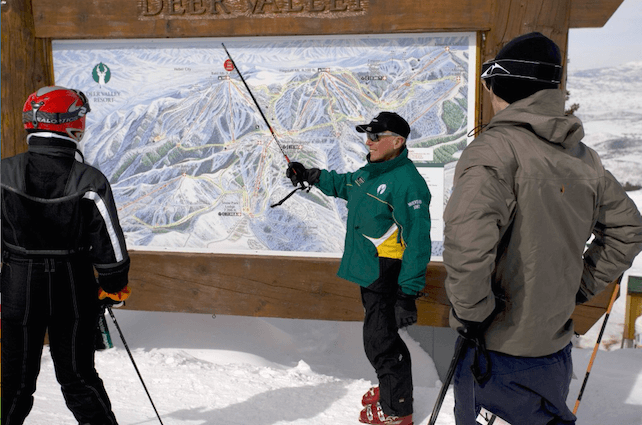
The service in North America is typically fantastic – and, although Europe is getting better, you can experience surly staff too often in some Alpine resorts. Unlike Europe, the whole ski area and the resort itself along with most hotels, ski schools, childcare and even restaurants are usually operated by a single company.
No grumpy pisteurs or over-the-hill ski instructors here. The career prospects, or at least the pay packet, of each and every employee both on the mountain and off is geared towards your enjoyment of the corporate experience.
It’s also the little touches than can enhance the holiday experience, such as free tissues along with lift maps supplied at nearly all lift stations. Have a nice day? They mean it.
The Ski Safety
Europe
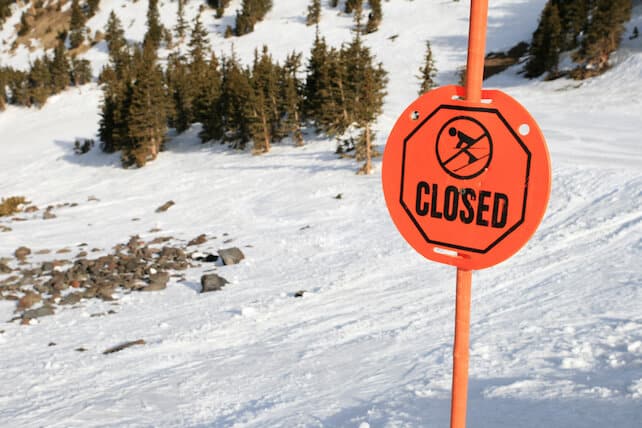
We love the Alps, as you can go anywhere. You have a sense of exploration and have to take responsibility for your own actions. There’s a relaxed attitude here, with ski patrollers less in evidence. Do you actually know anyone who’s ever had their lift pass confiscated for speeding in the Alps? Rules vary from country to country but in France, for example, it is unfortunately not against the law to go down a closed run, or indeed to ski off-piste with an avalanche warning of 5/5 (it’s just suicidal).
In any conditions, whether you decide to leave the groomed and patrolled confines of your resort is a personal decision. For those who believe that enjoyment of mountains, like the sea, should be as free as possible and subjected to minimal legislation, this is a definite plus point.
North America
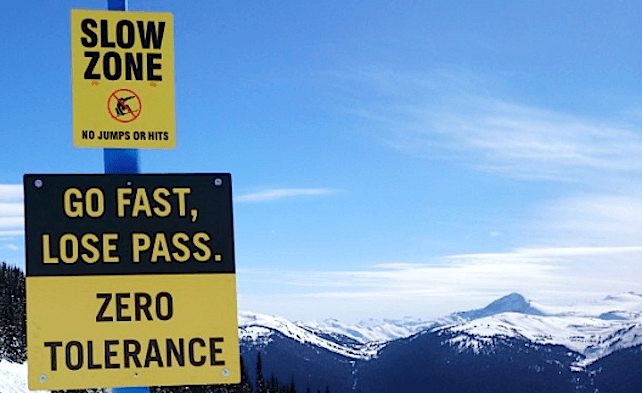
Although there are more areas allowing you out of bounds, in North America it does feel too controlled sometimes. There are a lot more rules and regulations here, usually followed meticulously. Piste police are about on many of the trails; signs warn you repeatedly not to leave the prepared ski area. The same applies to drink and ski, speeding and ski.
Your average skier or snowboarder tows the line. Go under a rope beneath a chair-lift and you’ll have the whole cableway hollering at you! In most places it’s a federal offence that involves more than the confiscation of an expensive lift pass. You’re liable to be arrested by people with guns and to be carted off to jail in preparation for a rendezvous with a (non-skiing) judge.
How Ski Areas Compare
Europe
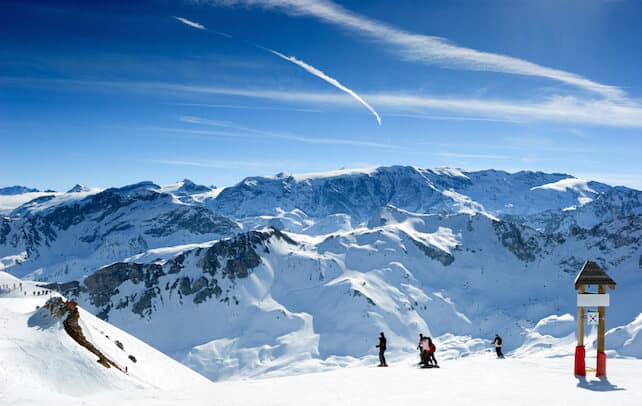
We love the charm and history of some of the Alpine ski towns and the big ski days of travelling from village to village – such as from Courchevel to Val Thorens or the Arlberg’s white circle – they’re such good days out. For the average recreational skier that Courchevel and the 3 Valleys ski area is hard to beat, with kilometres and kilometres of blue and red pistes to explore.
Big is beautiful certainly applies to Europe. Each year new lift links between resorts create larger and larger circuits. In 2016/17 it’s the turn of St Anton and Lech. A European ski area with 250km of piste and 200 lifts is tame stuff these days. In fact nine out of ten of the biggest areas in the world are in the Alps.
North America
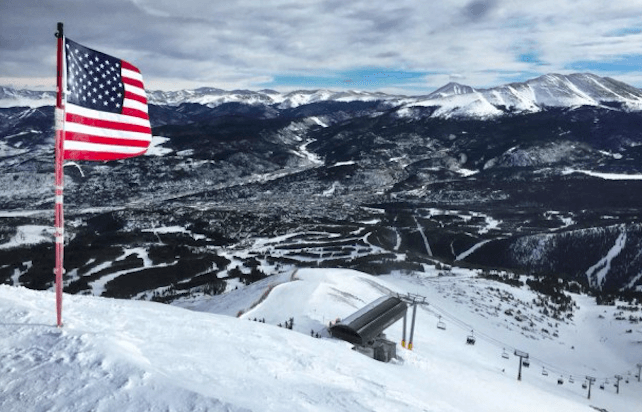
It may come a surprise to find that a world famous destination like Jackson Hole has just 13 lifts, while Whistler has only 38. But, as we all know, linking resorts is a convenient marketing tool. Most skiers don’t explore that far afield in a single week.
Before skiing in North America you might have had the impression it was all going to be tame and non-challenging. You would be wrong. There is some really exciting skiing over there – which anyone who has looked down Corbets Couloir will testify to.
Crowding
Europe
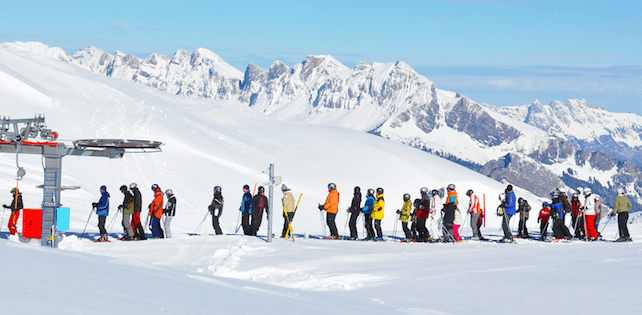
Europeans have lots of holidays and they tend to have to take them all at the same time. Sensible Brits try to avoid New Year and February half-term. However, they are then shocked by the volume of fellow skiers competing for slope space when they arrive in the French Alps during the Paris official school holidays or in Austria at Carnival time.
The peak weeks result in inflated prices and dangerously overcrowded runs, prefaced by free-for-all lift queues. Have you ever competed against a hundred French teenagers for a chair-lift? Joining the crowds at an Ukrainian premier league football match is safer!
North America
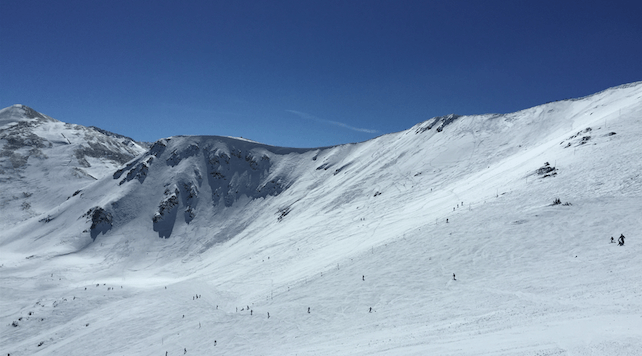
The lack of lift queues in North America is great, and the pistes are generally pretty empty. Americans have almost no annual holidays at all: just two weeks is the normal entitlement, but few take it all for fear of losing their jobs. So peak week overcrowding doesn’t really exist except perhaps over President’s Weekend, a bank holiday on the third Monday in February.
Lots of skiers make of a week of it – or at least extend it into a four-day short break. It can be very busy, but never like Europe.
Lift queues (called ‘lift lines’ in North America) are regimented in a way designed to make the average aforesaid French teenager chuck away his skis and take up cage-fighting! Resort marshals shepherd the queue into separate columns that take their turns to ride.
When right of way is uncertain, one group will address the oppo: “Hey guys, can we alternate with you?” Back comes the response: “You folks go right ahead, and have a nice one.” Such sensible civil, albeit, sugary behaviour is alien to Europe.
Snow Quality
Europe
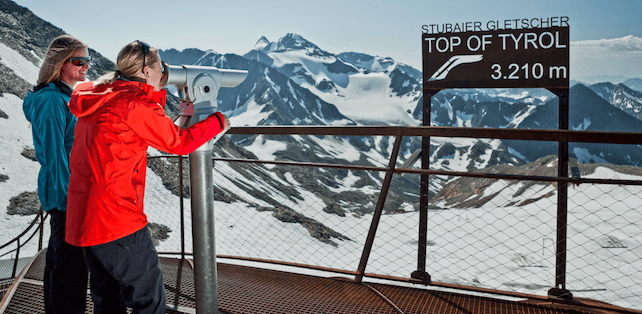
Some of the top resorts are at low altitude – such as those in the Portes du Soleil, and Megeve – so you could be end up with insufficient snow early or late in the season. As the treeline is high in the Alps, there’s plenty of tree-skiing on offer lower down, which is great for those bad weather days.
Glacial resorts in the Alps – such as Zermatt, Hintertux, Kaprun, Solden, the Stubai, and Val d’Isere–Tignes, along with Les Deux Alpes offer snowsure skiing even in the driest and warmest winters. These resorts open for several months outside the normal season with pistes skiable even during the summer months.
Because of the relatively short distances that the precipitation travels before dumping on mountains, European snowflakes are generally wetter and heavier…making off-piste technically more challenging.
North America
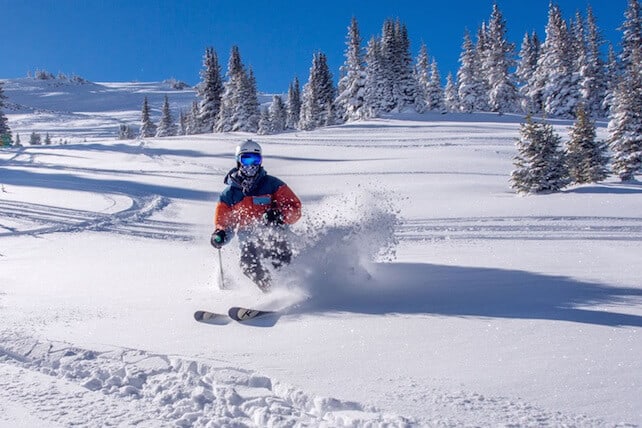
Learning to ski off piste here is a great as you get access to lots of bowls and unpisted terrain that is controlled, so it’s relatively safe for you to learn the technique and gain experience. For much of the winter, resorts in the Rockies – especially in Utah – can count on talcum-like powder, thanks to the snow’s long journey across deserts before making landfall.
The Rockies do accumulate more snow during a season than the Alps, but don’t be suckered into thinking that good cover is always guaranteed.
North Americans have not only the best snowmaking machines, they also have by far the best PR machines. In the Alps, a resort will announce that it’s 40% open with 125 runs out 185. This may be factually correct, but it’s negative. The equivalent counterpart across the pond will tell you that all 100% main runs are open and boy, is it skiing well!
Lift Pass Prices
Europe
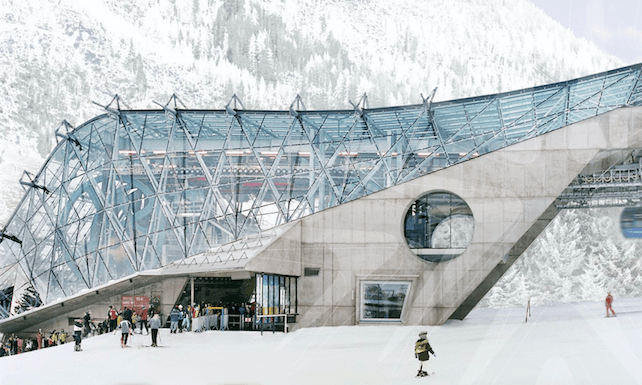
Lift passes come with a limited number of choices. In general you can choose one that cover just the resort in which you are staying or pay more for the regional pass that also covers linked and sometimes non-linked neighbouring resorts.
Adult and child prices for the larger pass vary by date, with a lower one for early- and late-season skiing and a higher one for the main part of the winter. Resorts may also offer reduced price family passes. Booking through a tour operator can give a substantial saving.
North America
Lift pass prices in North America are high compared to Europe. Unlike Europe, there seems to be no set price for a lift pass at all and it requires some know-how to find the right deal. There’s the expensive ticket window price for the skier who shows up on the day – to be avoided at all costs – and then a whole series of discounts that are based on when and how you book.
Our advice is always to arrange to buy passes through your tour operator who will have negotiated the most favourable deal.
Eating on the Mountain
Europe
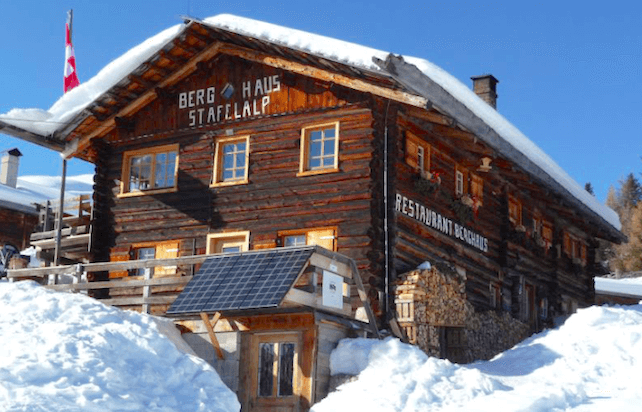
Generally the food we have experienced up on the mountain in Europe has been better than in North America. Skiing in Italy, for example, you can look forward to the food as much as the skiing.
We always say that the best resort in the world is the one where it’s snowed 20cm overnight, the sun is shining, you are with the company of family or close friends…and lunch looks promising. This can take the form a bargain bowl of pasta or Gulaschsuppe or a plate of Rosti in some delightful wayside hut – or it can involve a gastronomic blow out in somewhere like the Verwall Stube in St Anton or La Soucoupe above Courchevel 1850.
North America
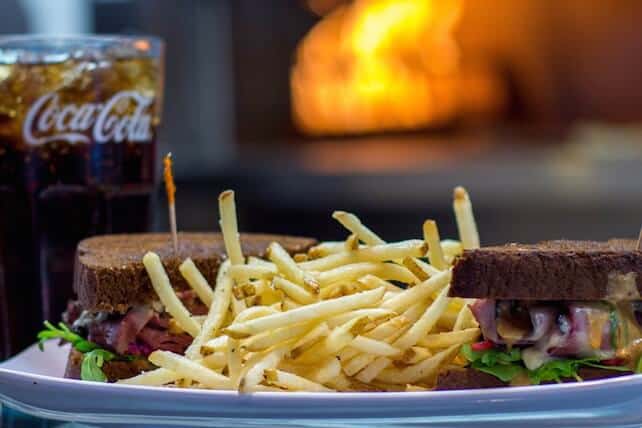
Yes, there are notable exceptions – such as Cloud 9 in Aspen or Il Villagio Osteria in Jackson Hole – but on the whole the lunchtime eating scene is focussed on giant self-services with little ambience albeit a good choice of fast food.
Staying There
Europe

The traditional catered chalet holiday is almost exclusive to the Alps. At the top end these come with the level of service you’d expect only to find in a five-star hotel, along with chefs who have learned their trade in Michelin-starred restaurants. Cooked breakfast, afternoon tea, canapés and champagne before a four-course dinner with unlimited wine are all part of the deal.
Apartments are considerably smaller than their North American counterparts, and when they say ‘sleeps six’ this can be in one bedroom, a sitting room with a sofa bed and an alcove with bunks in it – although this isn’t always the case of course.
Hotels nearly always include breakfast, and there’s a half-board dinner option. You’ll pay extra for wine, soft drinks and coffee, which is why many people prefer to stay in chalets.
North America
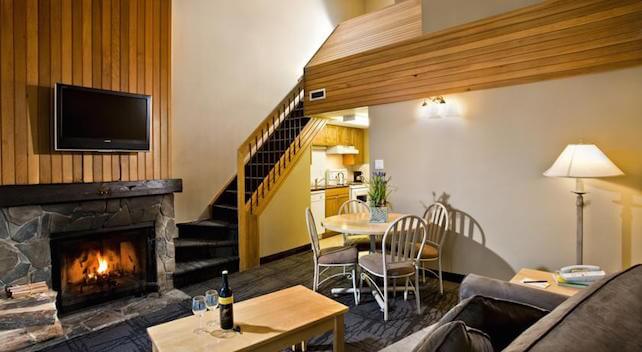
You’ll have to search very hard indeed to find the sort of cosy catered chalet holiday you may be used to in the Alps. Apartments (‘condos’) are a lot bigger than their European counterparts. When the literature says ‘sleeps six’ you can expect three good-sized bedrooms – often with two King or Queen sized double beds in each.
Room-only is the norm in hotels, with everything coming in as an extra including breakfast. Occasionally you’ll find a free vending machine for coffee, along with a free muffin at breakfast-time. The top hotels have ski valets who lay out your skis on the piste and even help you on (and off) with your boots as well!
Apres-Ski Fun
Europe
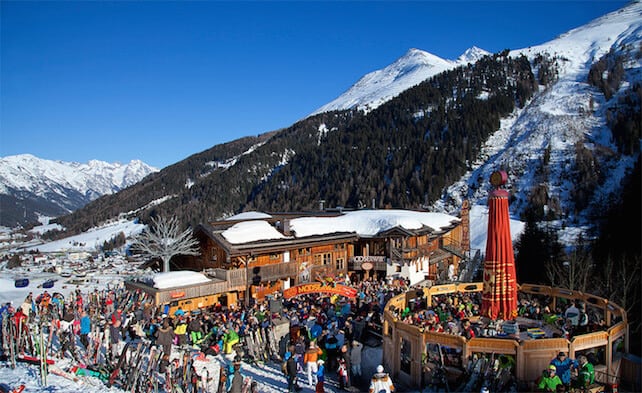
Apres-ski may be a French word, but Austria is where it thrives. In Europe it is so much fun – there’s something for everyone – such as at the Mooserwirt and Krazy Kanguruh in St Anton, where the music gets going and the beer flows freely from mid-afternoon onwards.
In recent years, the French have finally sharpened up their act – thanks largely to Val d’Isere music venue, La Folie Douce, which is now franchised to half a dozen other resorts. As darkness falls, the apres scene migrates down the mountain into bars in the resort. In the major resorts it dies down at dinner time, flares up again afterwards and carries on until dawn.
North America
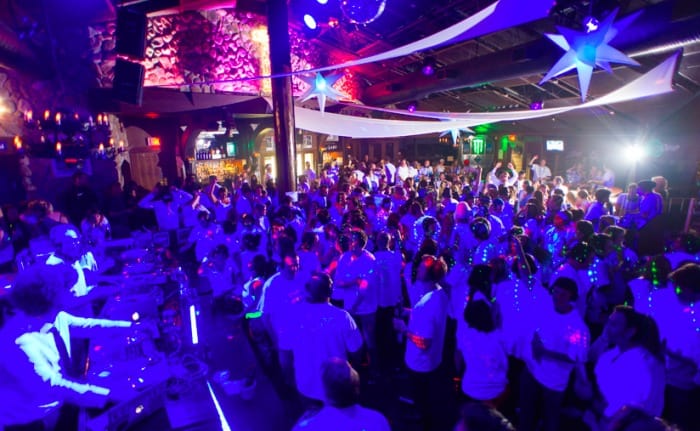
After skiing is much more subdued and drinking up the mountain is most definitely frowned upon. Whistler and Aspen both have popular bars at the foot of the slopes, Banff is lively, but after dinner the nightlife in most resorts tends to be a lot quieter than it is in the Alps.
The Hidden Extra: Tipping
Europe
Prices in general include service although in, say, a restaurant in France it is polite to round up the bill to the next big number. For example, if your family’s bill in a mountain restaurant comes to €189 you might give €200.
North America

The downside in the USA is tipping: everyone in every walk of life – from bellhop and waitress to ski instructor and cab driver – expects a socking great tip – 17 to 20% because their wages are geared accordingly. If they don’t get it, waiters have been known to chase guests down the street! It’s a significant hidden expense for any holiday.










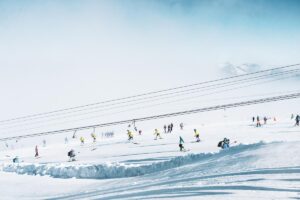
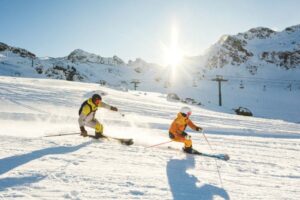
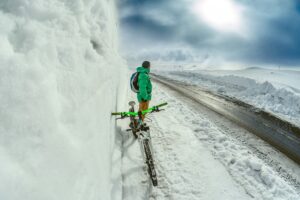
” but in France, for example, it is not against the law to go down a closed run, ”
This is incorrect. A closed run has the same legal significance as a closed road: this was made clear just recently in the debate in the French media that followed the avalanche deaths in Les Deux Alpes on the Bellecombe piste.
See our post on the subject Derek, written on January 19th. It says the following, which we have thoroughly researched: “…Skiing outside the patrolled area is not illegal in France. Entering a closed piste is the same as going off-piste. Any notice telling you that it is closed is advisory rather than mandatory. It’s a matter for the individual”.
Well, I’ve now read that Felice but don’t see anything that clarifies it. There was naturally a lot of coverage on this, as you would imagine and there was a long debate – on Fr 2 I believe I saw it – about everything involved and it was clearly stated that a closed piste has the same legal status as a closed road. The discussion included numerous ski professionals amongst whom was Christian Reverbel, Director of Pistes at LDA.
There was however, one intriguing legal point about this piste however, and that was that it had not been open at all in the 2015/16 season because of poor snow. In this particular case -and this will inevitably play a part in the court-case – because the piste had never been legally open, it could not therefore be closed ! Kafkaesque, huh ? In this very unusual set of circumstances, the Bellecombe piste was simply part of the off-piste domain and the closure would have had no strict legal significance.